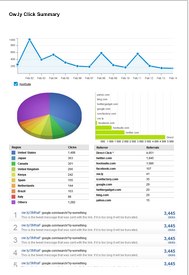At the turn of the year many of us find ourselves doing longer range visioning and planning for a high impact year ahead. And if you’re like me, it’s a time to get out of the day to day grind of fighting fires, to cast our eyes up a level and think about proactive, strategic initiatives we can launch to get out in front of the game.
But the problem with a lot of planning is it isn’t grounded in the actual reality of the now. For digital programs, that means knowing, as exactly as possible, the current state of our performance. Only when we know that, can we set realistic goals for the future.
I recently did some research for a client on how to set up Key Performance Indicators (KPI’s) for their new digital program. Inspired by some great resources from Avinash Kaushik and the EConsultancy, we can break the process down into five easy steps.
1. Review your business and social objectives
Always start with the most important financial / organizational and social purpose objectives of the institution. This clarifies the critical question “why does our website, social media, email, etc exist in the first place?”. These over-arching objectives set the strategic direction, focus, and purpose for everything else. If you don’t have these, it’ll be very difficult to do what comes next.
2. Clarify top goals for your digital program
These are the strategy and priorities for your department, what you can influence as a digital director. They are specific, often short-term improvement initiatives you are working on to help achieve the larger, longer term objectives. “Redesign section X of our site for better conversions”, “increase sharing of content on Facebook”, “encourage more internal experts to blog”, and “mobile optimize website” are examples you might have in your plans for 2013.
3. Identify specific digital metrics to measure
This is the fun part: a big brainstorm of all the possible things you could measure to track your performance in relation to your goals. This is also where most measurement projects start, and, unfortunately, stop – by producing long, dense reports of un-related, out of context, and difficult to understand data points, that overwhelm audiences. There’s one more key step after this.
Typical metrics include: Website performance (visitors, time on site, traffic sources, etc), Social Media (Facebook fans, reach, Twitter RT’s, etc), Email (list size, open and click-through rates, etc) and advertising / search metrics, if applicable. Depending on the objectives of your digital program, you may also want to measure things like number of articles published per month, number of authors writing, number of third party site re-posts of your content, etc. An exciting emerging area comes in measuring networks and distributed, long tail effects, a topic Beth Kanter recently wrote a whole book on.
Finally you may also want to include a section for good old fashioned anecdotes, aka “informal feedback from key audiences”. Those stories, particularly from high level people you aim to reach, can often be as or more powerful storytelling tools than the numbers you collect on mass audience patterns.
4. Create specific KPI’s for the most important metrics
Now we get closer to the art of it. You must then whittle down all of the things you could measure to a list of only the most important data points that show progress (or lack thereof) towards your most important program goals. These are the short-list that would live on a dashboard that busy people will read. And the fewer points you give them, the more likely they are to remember.
5. Make a plan for how data will be gathered and shared
 The final step is to ensure both one time (baseline and ongoing data is captured, by whom, and how often (I suggest quarterly for senior management reports, though for faster moving programs monthly may be more appropriate). Also who needs to see specific data points, to build more distributed ownership of the digital program outside silos.
The final step is to ensure both one time (baseline and ongoing data is captured, by whom, and how often (I suggest quarterly for senior management reports, though for faster moving programs monthly may be more appropriate). Also who needs to see specific data points, to build more distributed ownership of the digital program outside silos.
And don’t forget to ensure the format you are presenting them will be easy on the eyes! There’s nothing more mind-numbing than a massive spreadsheet or big messy page of irrelevant pie charts.
Measuring, tracking, and communicating KPI’s that are relevant to the larger goals of your institution is the best way of growing engagement in the digital program outside the nerd corps. It serves to focus staff and financial resources on what really matters, and can be an invaluable learning tool to know what’s working and what isn’t. Especially if you’re in the business of engaging people in your work, with limited resources.
Doing KPI’s right shows others you are a competent, strategic manager, who is ready for more responsibility and access to senior decision makers, an increasing necessity in our work. Let’s get to it and measure an outstanding 2013!










